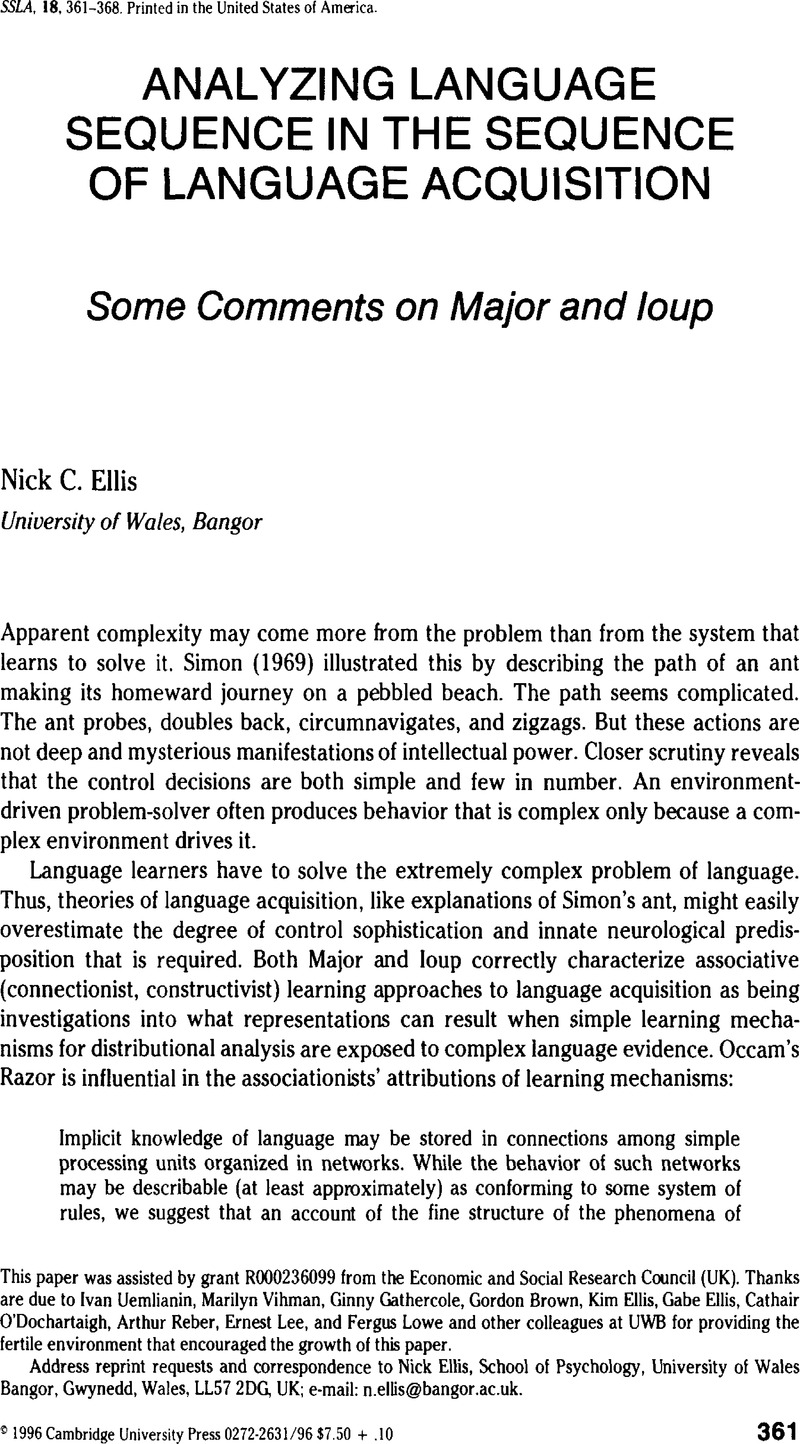Crossref Citations
This article has been cited by the following publications. This list is generated based on data provided by Crossref.
Pérez-Leroux, Ana T.
and
Glass, William R.
1999.
Null anaphora in Spanish second language acquisition: probabilistic versus generative approaches.
Second Language Research,
Vol. 15,
Issue. 2,
p.
220.
Perera, Natsuko Shibata
2001.
The Role of Prefabricated Language in Young Children's Second Language Acquisition.
Bilingual Research Journal,
Vol. 25,
Issue. 3,
p.
327.
Cho, Min Young
2010.
The effects of input enhancement and written recall on noticing and acquisition.
Innovation in Language Learning and Teaching,
Vol. 4,
Issue. 1,
p.
71.
Rogers, Todd
and
Frey, Erin Lynn
2014.
Changing Behavior Beyond the Here and Now.
SSRN Electronic Journal,
Rogers, Todd
and
Frey, Erin
2015.
The Wiley Blackwell Handbook of Judgment and Decision Making.
p.
723.
Geeslin, Kimberly L.
Gudmestad, Aarnes
Kanwit, Matthew
Linford, Bret
Long, Avizia
Schmidt, Lauren B.
and
Solon, Megan
2018.
Speaking in a Second Language.
Vol. 17,
Issue. ,
p.
1.
ELLIS, NICK C.
2019.
Essentials of a Theory of Language Cognition.
The Modern Language Journal,
Vol. 103,
Issue. S1,
p.
39.
Колоїз, Ж. В.
2023.
Матеріали студентських наукових читань : зб. наук. праць. Вип. 11.





